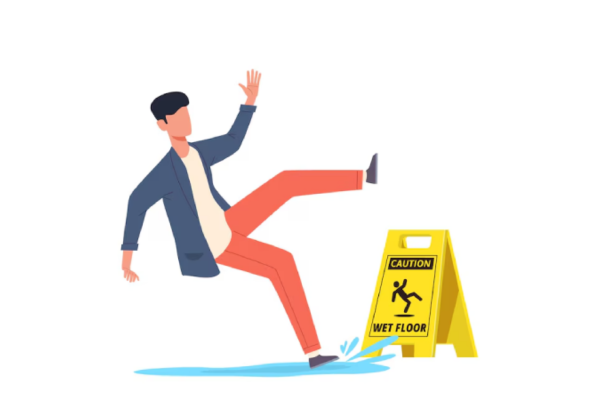The Most Common Workplace Hazards In Vermont’s Agricultural Industry—And How To Protect Yourself
by Pijus Maity Legal 03 January 2025

In Vermont’s agricultural industry, workers face unique challenges every day. Agriculture is vital to the state’s economy, but it comes with inherent risks. Many have been injured at work, and understanding these risks is crucial.
The most common hazards include machinery mishaps, exposure to chemicals, and repetitive movements. Machinery can be unpredictable and requires careful handling.
Chemicals such as pesticides, if not managed properly, can pose significant health risks. Repetitive tasks can lead to strains and sprains. Addressing these hazards is key to fostering a safe work environment.
Taking proactive measures can prevent incidents before they occur. Using proper equipment, ensuring adequate training, and wearing protective gear are essential steps.
Each task, from planting to harvesting, demands different precautions. Being prepared and informed is our best defense. In this blog, I will explore these hazards in detail and provide practical ways to protect yourself in the fields of Vermont.
Common Hazards on Farms

Farming needs a lot of hard work for a prolonged period of time. Even if innovations and different machinery have made the job simple, there are still a lot of risks associated with it. Here are some of the most common workplace hazards in the agriculture industry.
This is one of the most risky professions, as it involves handling a lot of heavy machinery, hazardous chemicals, and other other risks as well.
Tractor incidents
Tractors and other large equipment have a tendency to tip over and trap workers under them. Because of that, the driver and other close people have to risk of getting crushed when such a heavy machine falls on the side.
Organ damage, broken bones, and excessive bleeding are a few examples of crush injuries that happen in this kind of accident.
Burns
Farms are full of combustible materials. These include fuels, storing grain, dust from harvesting, and gas, which is produced by manure. Explosions and fires happen when these materials come in contact with any kind of ignition source.
Significant burns often cause loss of feeling, mobility, and other things that add to the pain as well as the damage.
Chemical exposure
There are various chemical farms that use chemicals to kill insects and weeds. However, if you are exposed to these poisons, not just vegetation and insects but people working with it as well.
Herbicide and pesticide exposure, even for a small period of time, can cause skin, mouth, eyes, and nose irritation. It often irritates and blocks the airways. People who live close to the farms and workers are at risk of cancer along with some other serious illnesses if they are exposed to these for a long time.
Heat or cold
Sunstroke, dehydration, and heat stroke are illnesses caused by extreme weather conditions. Workers should have a proper ventilation system, share, enough water, and cooling vests to protect themselves from heat-related illness.
Moreover, workers need to wear layered clothing, gloves, helmets, and heat packs to warm them up quickly. Also, take regular breaks, get indoors, and sip on hot beverages to protect yourself from the cold.
Falls
Farmers often climb heights to complete their taste, whether to stand on soil, perform tree surgery, or scale barns. Falling from heights is one of the most common kinds of accidents that happen on a farm. These falls cause employees catastrophic injuries like brain damage and shattered bones.
Understanding Machinery Hazards

Machinery plays a critical role in modern agriculture, aiding in planting, harvesting, and processing. However, these machines can be dangerous if not used properly. Common machinery-related incidents include entanglements, crush injuries, and falls from equipment. To minimize risks:
- Receive proper training on equipment operation.
- Regularly inspect machinery for wear and tear.
- Always use safety guards and protective devices.
For more detailed guidelines, the Occupational Safety and Health Administration (OSHA) offers resources to ensure safe machinery practices. Following these steps helps maintain safety in the workplace.
Dealing with Chemical Exposure
Chemical use is widespread in agriculture for tasks like pest control and fertilization. While effective, these substances can pose health risks. Symptoms of chemical exposure can include skin irritation, respiratory problems, and long-term health effects. To protect yourself:
- Wear appropriate personal protective equipment (PPE) like gloves and masks.
- Follow label instructions when handling chemicals.
- Ensure proper storage and disposal of chemical products.
Understanding the Material Safety Data Sheets (MSDS) associated with each chemical product can also help in managing risks. The EPA’s guidelines provide further information on safe chemical use in agriculture.
Managing Repetitive Motion Strains
Repetitive tasks, such as picking and sorting, are part of agricultural work. Over time, these actions can lead to musculoskeletal disorders. To reduce strain:
- Take regular breaks to rest and stretch.
- Use tools designed to reduce physical strain.
- Alternate tasks to vary muscle use and prevent overuse.
Implementing ergonomic practices helps in maintaining worker health and productivity. Recognizing early signs of discomfort and addressing them promptly can prevent long-term injuries.
Common Agricultural Hazards Table
| Hazard | Potential Injury | Prevention |
| Machinery | Entanglements, crush injuries | Training, maintenance, and safety guards |
| Chemicals | Respiratory issues, skin irritation | PPE, proper handling, storage |
| Repetitive Movements | Strains, sprains | Breaks, ergonomic tools, task rotation |
The Importance of Safety Culture
Promoting a culture of safety within the agricultural workplace is essential. Encouraging open communication about potential hazards and incidents leads to better safety outcomes.
Regular safety meetings and training sessions reinforce the importance of vigilance. By fostering a collaborative environment, workers can share insights and strategies to enhance safety.
Conclusion
Vermont’s agricultural industry is both rewarding and challenging. Understanding and addressing common workplace hazards is vital for ensuring the safety of all involved. By focusing on machinery safety, chemical handling, and ergonomic practices, we can create a healthier work environment.
Continuous education and adherence to safety guidelines are essential in protecting yourself and your colleagues. Remember, safety is a shared responsibility, and together, we can make Vermont’s farms safer places to work.
Also read



































































































